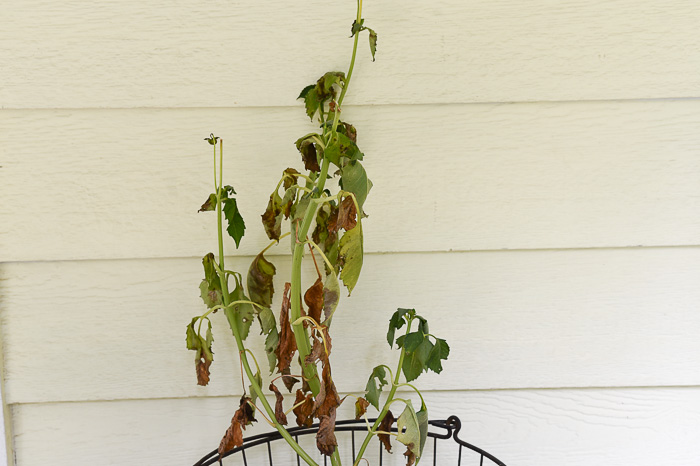Explore Why Some Plants Turn Down Epsom Salt as a Nutrient Source
In the detailed world of plant nourishment, the denial of Epsom salt as a practical nutrient resource by some plants poses an intriguing quandary. Despite its rich magnesium and sulfur material, certain plant types appear to shun this conveniently available substance. The factors behind this selective habits delve right into an intricate interplay of plant absorption devices, the unique chemical structure of Epsom salt, and plant-specific nutrient choices. Understanding these variables may clarify the enigmas of why some plants decide out of using this relatively beneficial nutrient source.
Plant Absorption Systems
In diving right into the elaborate world of plant absorption systems, it becomes obvious that the process is governed by an innovative interaction of molecular paths and physical dynamics. Plants absorb nutrients mostly with their roots, using various transport systems to uptake important components such as nitrogen, potassium, magnesium, and phosphorus. Magnesium, an important part in chlorophyll synthesis and enzyme activation, plays an important function in plant growth and growth.
The absorption of magnesium entails a number of actions, beginning with its accessibility in the dirt remedy. As soon as dissolved, magnesium ions are occupied by plant origins via particular transport proteins embedded in the cell membrane layers. These healthy proteins promote the motion of magnesium throughout the origin cell wall surfaces and right into the plant's vascular system, where it is after that distributed to various cells to support various physiological functions.
Understanding the intricate systems behind magnesium absorption in plants drops light on exactly how this necessary nutrient contributes to total plant wellness and efficiency. By optimizing magnesium uptake paths, cultivators can boost plant returns and quality, underscoring the value of comprehending plant absorption characteristics for lasting agriculture methods.
Epsom Salt Chemical Structure
The chemical structure of Epsom salt, likewise known as magnesium sulfate heptahydrate, discloses a distinct plan of elements that contribute to its distinct residential properties and applications - what plants don't like epsom salt. Epsom salt is composed of magnesium (Mg), sulfur (S), oxygen (O), and hydrogen (H) atoms. The formula MgSO4 · 7H2O suggests that each particle contains one magnesium atom, one sulfur atom, four oxygen atoms, and 14 hydrogen atoms. The presence of water particles in its framework adds to its solubility in water. The 7 water particles are loosely bound to the magnesium sulfate substance, allowing it to dissolve conveniently in water and be easily used up by plants via their roots.
The crystal structure of Epsom salt creates monoclinic prisms, which are extended crystals with parallel ends. This crystal shape influences the physical homes of Epsom salt, such as its structure and solubility. Understanding the chemical framework of Epsom salt is critical for understanding its habits as a nutrient resource and its interactions with plants in farming and horticultural methods.
Plant-Specific Nutrient Preferences
Plants display distinctive choices for certain nutrients, stressing the relevance of understanding their specific demands for optimum growth and development. These preferences are dictated by various elements, consisting of the plant varieties, phase of growth, ecological problems, and soil structure. For instance, some plants might grow in nitrogen-rich soils, while others need even description more phosphorus or potassium for healthy advancement. Understanding these plant-specific nutrient choices is crucial for taking full advantage of plant returns, enhancing ornamental plant development, and advertising general plant health - what plants don't like epsom salt.

Plant-specific nutrient preferences can also vary based on whether the plant is a monocot or dicot. By customizing nutrient supplements to fulfill the accurate demands of each plant varieties, cultivators can maximize plant development, minimize vitamins and mineral waste, and support lasting agricultural look at this site practices.

Soil Ph and Nutrient Uptake
Dirt pH plays a critical duty in establishing the availability of important nutrients for plant uptake. Acidic dirts with a lower pH are favorable for plants like blueberries and azaleas, while alkaline dirts with a higher pH match plants such as lavenders and clematis.
On the various other hand, alkaline dirts may restrict the schedule of nutrients like zinc, copper, and iron, affecting plant development. Maintaining the suitable pH level in the soil is essential for guaranteeing that plants can effectively uptake the needed nutrients for their healthy and balanced growth and productivity.
Hereditary Aspects in Nutrient Uptake
In the realm of plant nourishment, the interplay of genetic variables significantly influences the uptake of necessary nutrients important for plant development and advancement. Genetic aspects play an essential role in forming a plant's ability to absorb and utilize nutrients effectively.
Additionally, hereditary elements additionally identify the effectiveness of nutrient uptake devices within plants. As an example, some plants may possess hereditary traits that enhance their ability to feed on nutrients from the dirt efficiently, giving them a competitive advantage in nutrient-poor environments. On the other hand, genetic variations can also lead to limitations in nutrient uptake, making particular plants extra susceptible to shortages even when nutrients are abundant in the dirt.
Understanding how genetic variables affect nutrient uptake is vital for establishing techniques to optimize plant nourishment and improve crop performance in numerous agricultural settings. By unwinding the hereditary systems associated with nutrient uptake, researchers can work in the direction of establishing genetically enhanced plant selections with boosted nutrition purchase capabilities.
Verdict

In the elaborate globe of plant nourishment, the rejection of Epsom salt as a sensible nutrient source by some plants poses a fascinating quandary. what plants don't like epsom salt. Understanding these plant-specific nutrient preferences is important for taking full advantage of plant yields, enhancing ornamental plant growth, and promoting general plant wellness
By customizing nutrient supplements to fulfill the exact needs of each plant species, growers can enhance plant development, reduce nutrient waste, and support lasting agricultural practices.
In the world of plant nourishment, the interplay of hereditary aspects substantially influences the uptake of necessary nutrients crucial for plant development and advancement. Comprehending these complexities in plant nutrient uptake is crucial for maximizing plant growth and health and wellness in agricultural practices.